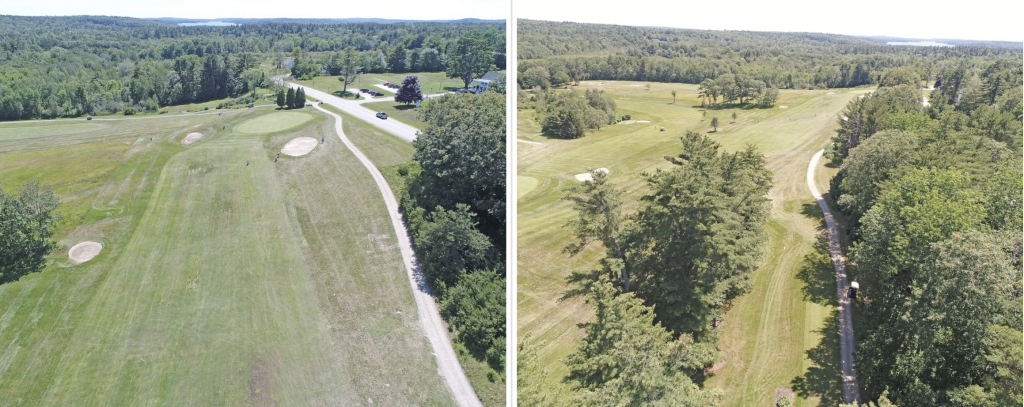Hole-by-Hole
Hole # 1 – Par 4
Standing on the elevated tee of Hole #1 imparts anticipation of and confidence in a fine round of golf. The broad fairway stretches out below with a full view of the green for a makeable, but not unchallenging par 4. For the low and high handicap player alike, the ideal drive is somewhat right of center leaving the second shot clear of the protecting bunkers. The woods immediately behind the green and the steep, hard slope to the left are the clues not to overclub or pull the approach shot.
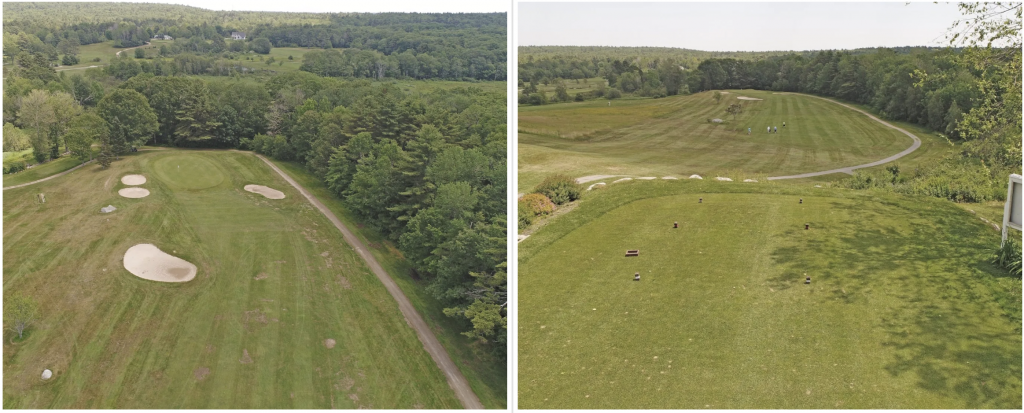
Hole #2 – Par 4
This offers a long par 4 from the back tees requiring a straight drive and a long iron to the green. From the forward tees, hitting a fading drive and a mid- or short iron would ensure being on the green in regulation. Resist the urge to fade the corner on the long drive – a shorter than expected fade may get bounced into the woods on the right. From the forward tee, aim at the large rock and fade it to the middle of the fairway. Setting up for the approach, note that all the bunker trouble is not visible – there is a sneaky back bunker long and right if the player overshoots the green. 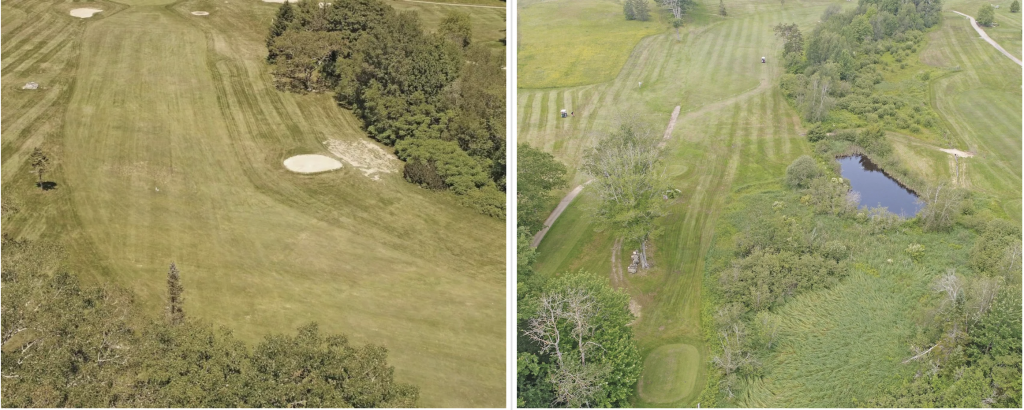
Hole #3 – Par 3
One of the longer par 3s in Maine. A long-hitting player should target the flag. Otherwise, aim for the green. With some roll, the terrain will move the ball to the right and up toward the green.

Hole #4 – Par 5
The daring power hitters will want to aim to the right to be down near the creek. This will give a peek to the green and the possibility of being on in two. However, most players will do best keeping it in play to set up the second shot over the creek to the landing area next to the pond. On the third shot, if the player can fly the bunkers and stop the ball on the green, good, but the option is to be left of the green. This leaves an unencumbered chip-and-a-putt for the par.
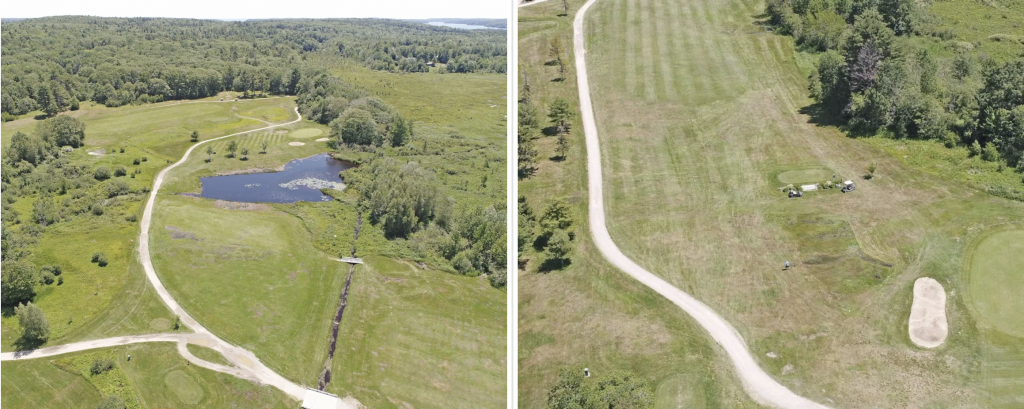
Hole #5 – Par 4
Like #2, this hole offers two very different paths. From either of the back tees, it is two good straight and long shots to be on for a 2-putt par 4. From the forward tee, the drive demanded is a draw around the corner setting up a short iron to the green. Be mindful of the tee shot set-up – if the drive here is straight and long it may make the woods opposite. Bunkers guard the green both left and right.
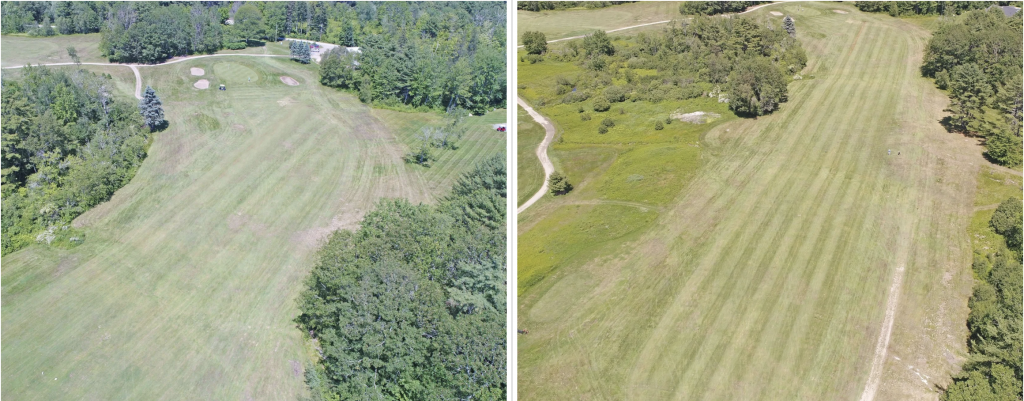
Hole #6 – Par 4
Perhaps the most picturesque hole, #6 is a make-able par 4, but not without its defenses. While having an ample landing area for the drive from either set of elevated tees, it is the approach shot that is the determining factor. The creek flows in front, a small pond lines the right-hand side of the green, and a bunker looms on the left. Accuracy on the approach shot will have its rewards.
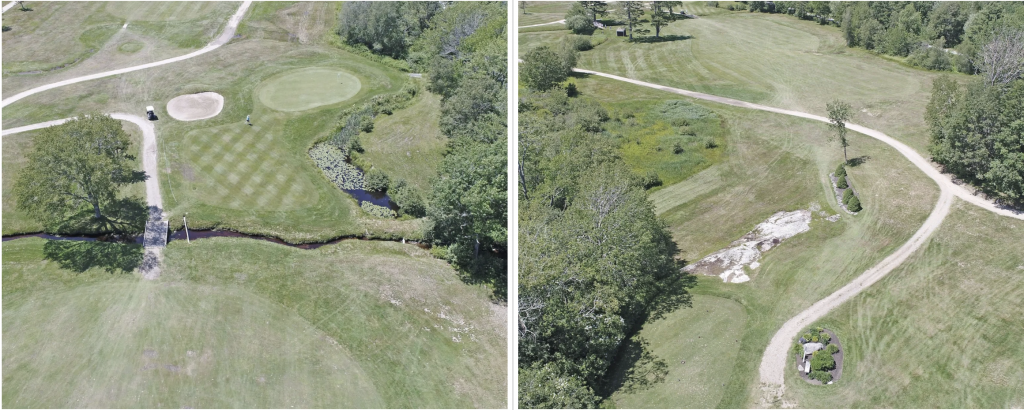
Hole #7 – Par 4
Nothing mysterious here. Looking out from the tees, #7 reveals all, – but that is the danger! It tempts the player to wallop a drive. Err, and end mixed up in the trees on the left or in thick rough on the right. The back-most tee asks for a slight draw. The green is deep and pitched to receive the approach shot making a good target, even for a long iron, if one manages to elude the bunkers left and right.
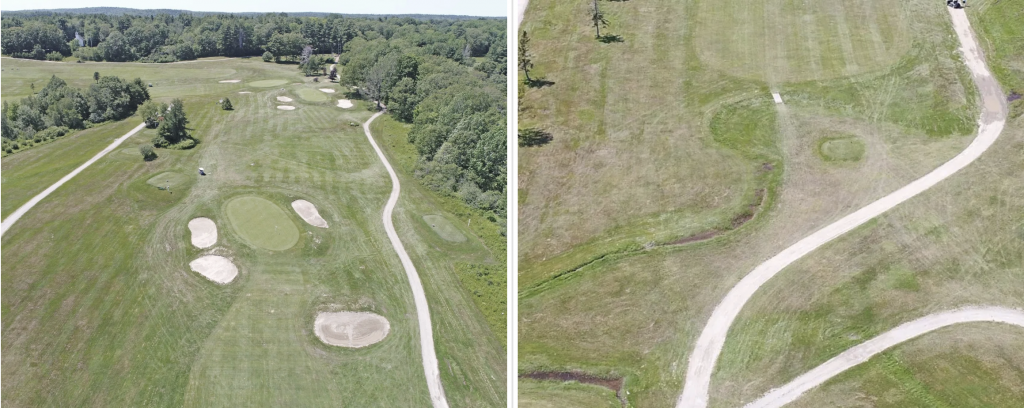
Hole #8 – Par 3
#8’s green is two-tiered and that difference can turn an otherwise lovely drive into a bogey. Aim to be below the pin. Stopping a downhill putt from the upper to the lower tier is challenging. Be too far right on the drive and the “Big Bertha” bunker will have the player struggling to save par.
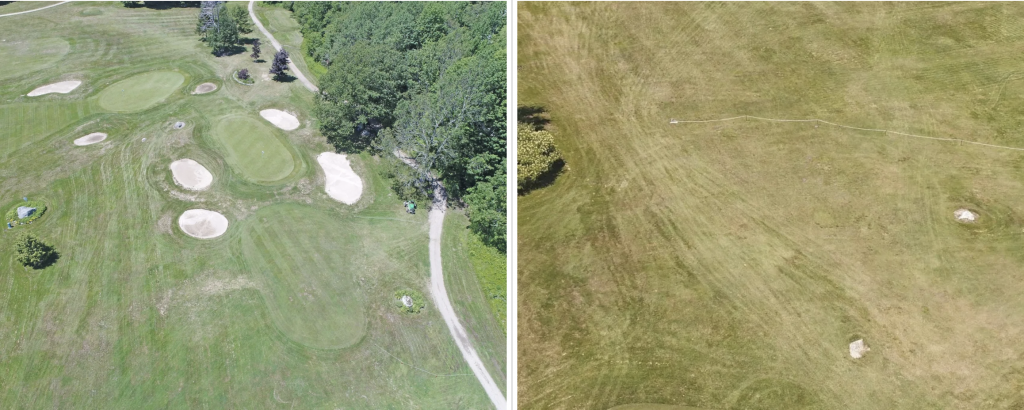
Hole #9 – Par 4
The entire fairway is on a right-to-left downslope leaving most drives with a sidehill lie for the second shot. To minimize this and to take the right-hand greenside bunker mostly out of play, drive long and left exposing the open front of the green. This tricky green which often breaks in unforeseen directions will require an especially careful read for speed and direction.
